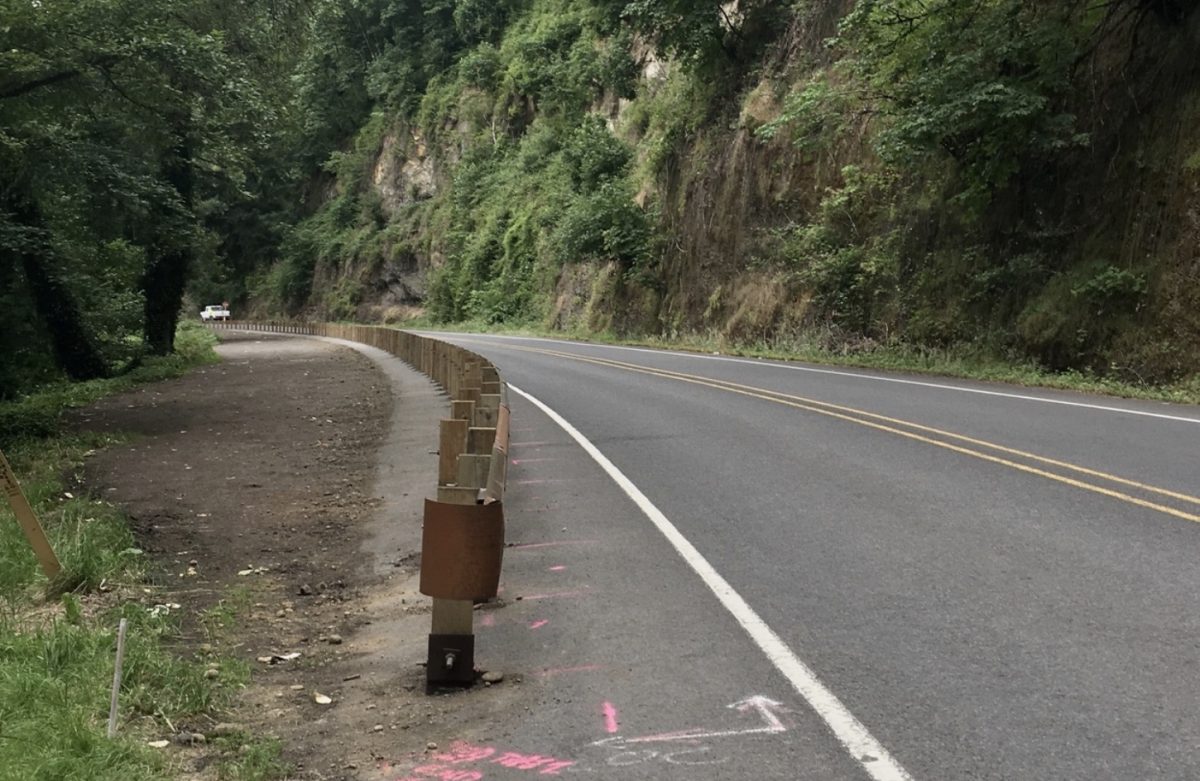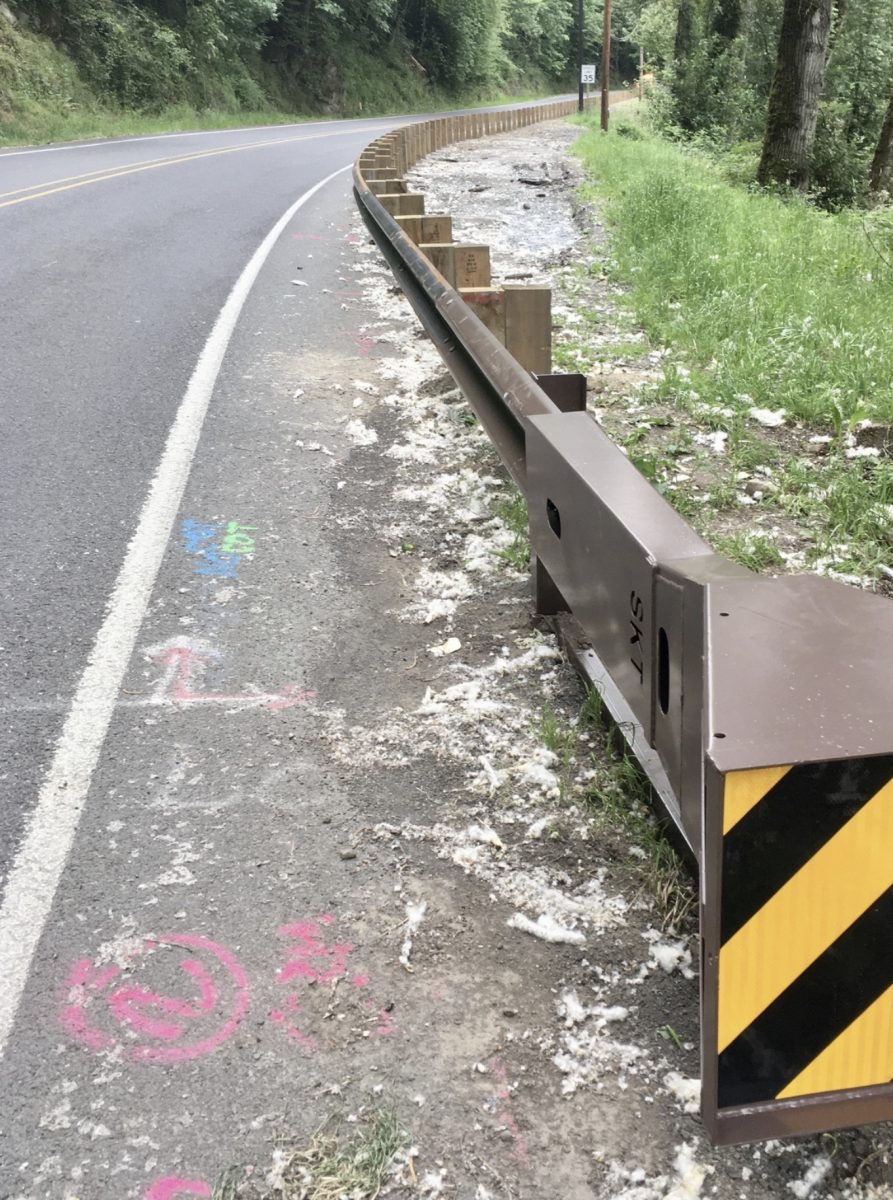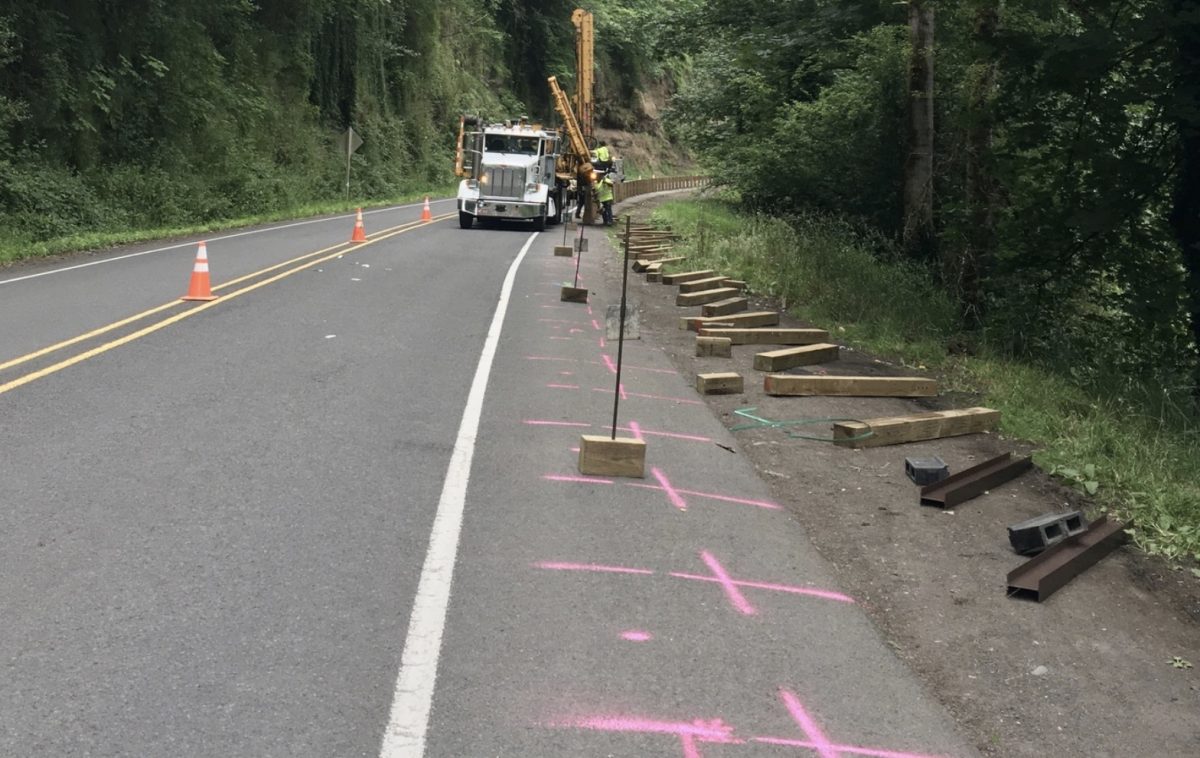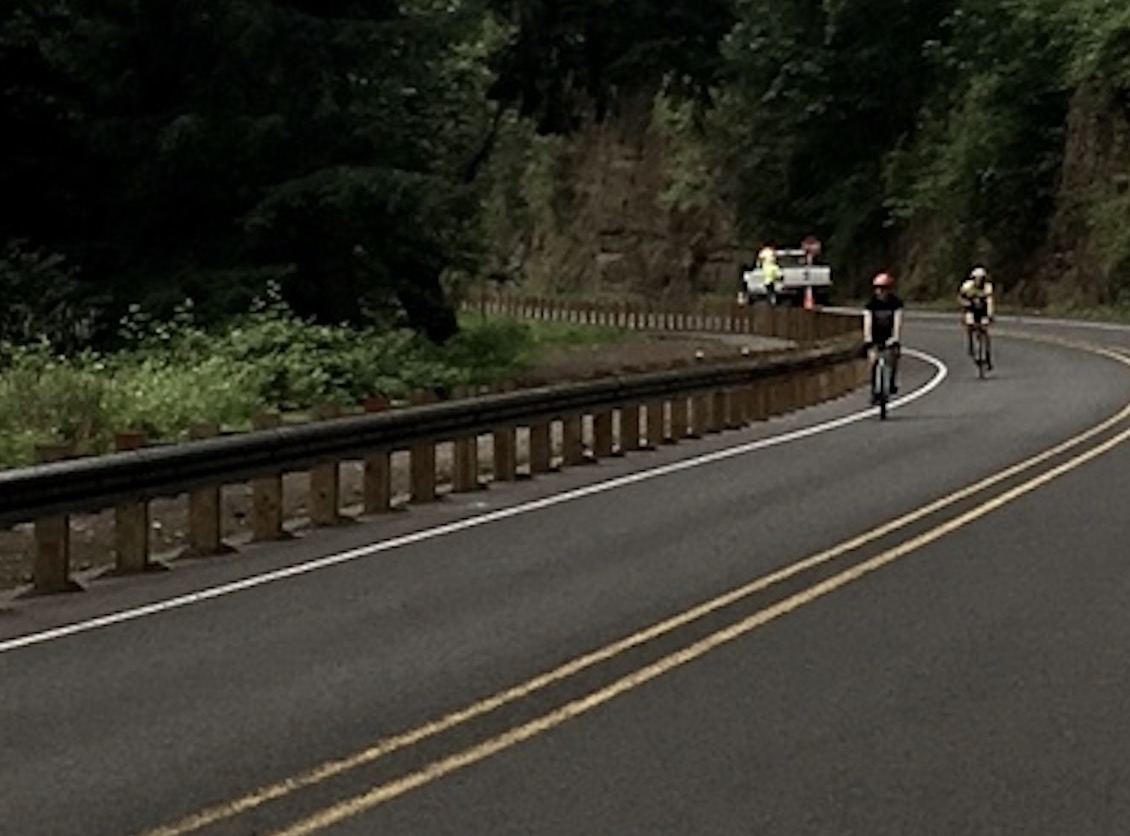
(Photos by BikePortland Forum user amadeusb4)
“We certainly understand how this effort reduces space available for bikers and other users…”
— Don Hamilton, ODOT
The Oregon Department of Transportation has narrowed the shoulder on several sections of the Historic Columbia River Highway. The installation of guardrails reduces space for cycling and increases danger for vulnerable road users on a very popular route along the Sandy River.
Earlier this month I noticed “No Parking” signs and barricades in several unpaved turnouts on the west side of the highway between Lewis & Clark State Recreation Area and the Stark Street Bridge. I assumed they were temporary measures to reduce crowds in line with the state’s Covid-19 response, or perhaps a way to discourage people from parking for several days without moving. Then last week BikePortland Forum user amadeusb4 noticed ODOT crews installing permanent guardrails.
“This is terrible for bicyclists!” amadeusb4 wrote. “I bicycle this often and always speed through the [existing] barrier sections because of the narrowness of the bike lane there. Now, most of the southbound side is going to have a barrier! While they will eliminate the occasional car backing out of a spot in front of a cyclist, they severely limit the amount of road available to bicycles to the right of the white line.”




As you can see in the images, ODOT’s new guardrail was placed in the middle of the paved shoulder. This leaves bicycle users with about half the space they had before.
The new guardrails have been installed at three different locations each about 1,000 feet long. There was zero public notice prior to their installation.
The Historic Highway already has a few sections of guardrail in this same general area and (like amadeusb4 shared above) the reduced shoulder space definitely increases stress levels. The speed limit here is 35 mph and curves and context of the road make it a place where some drivers go much faster. This section of the highway is extremely popular because it’s relatively close to Portland (about 20 miles away) and a gateway to great roads in Corbett, the Columbia River Gorge, Larch Mountain, Sandy, and so on.
Advertisement
Asked about the project, ODOT Region 1 Public Information Officer Don Hamilton said his agency knows the guardrails will lead to less space for cycling, but he maintains they are necessary to deter illegal parking and camping along the shoulder. “We certainly understand how this effort reduces space available for bikers and other users,” Hamilton shared with us in an email. “But illegal campers were already causing problems by blocking the shoulders and sometimes the road and creating significant health and safety hazards, among them litter and other debris and refuse.” Because of this, Hamilton claims the guardrails make the road safer for bike riders.
Hamilton added that they tried to position the barrier closer to the edge of the shoulder but they weren’t able to because of a buried gas line.
This is a very unfortunate move by ODOT. They’ve taken a temporary problem (illegal parking behaviors) and introduced a solution that has a permanently negative consequence to our most vulnerable road users on one our state’s marquee cycling routes. This section of the highway is also part of Adventure Cycling Association’s Lewis & Clark Trail route.
This is not the first time the agency has made cycling demonstrably worse on rural roadways (or refused to improve them when given the opportunity). In just one example, in 2013 ODOT faced an outcry from advocacy groups after miles of shoulder on the famed Oregon Coast Bike Route were repaved in a way that left a dangerous ridge in the pavement. The work went against ODOT’s own statewide guidelines and they ultimately forced the contractor (whom they blamed for the error) to re-do the work.
BikePortland Forum user Alan_1.0 says what happened on the Historic Highway can’t be blamed on a contractor. “This strikes me as quite egregious,” they wrote. “Intentionally making the road more dangerous to vulnerable users, even though it is known as a popular ride.” Alan_1.0 thinks ODOT should have a process in place to review roadway modifications to make sure they don’t have a negative impact on vulnerable road users.
I’ve asked Hamilton if they’d consider caution signs warning drivers of reduced shoulder width and/or to expect the presence of bicycle users in the roadway. He said they’ll look into it.
If you have feedback on these guardrails, you can share it via Ask ODOT.
UPDATE, 7/6: ODOT admits these were a “mistake” and is removing them now. See latest story.
— Jonathan Maus: (503) 706-8804, @jonathan_maus on Twitter and jonathan@bikeportland.org
— Get our headlines delivered to your inbox.
— Support this independent community media outlet with a one-time contribution or monthly subscription.

